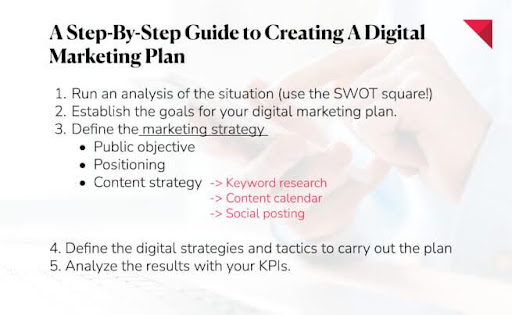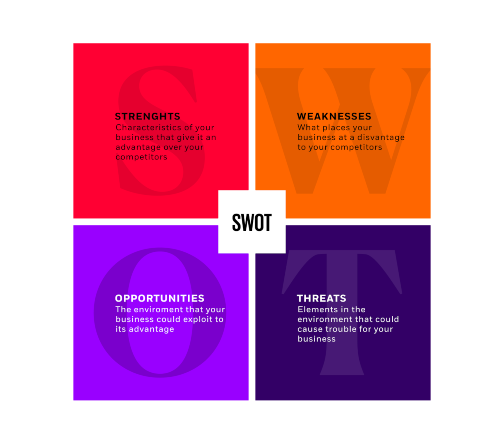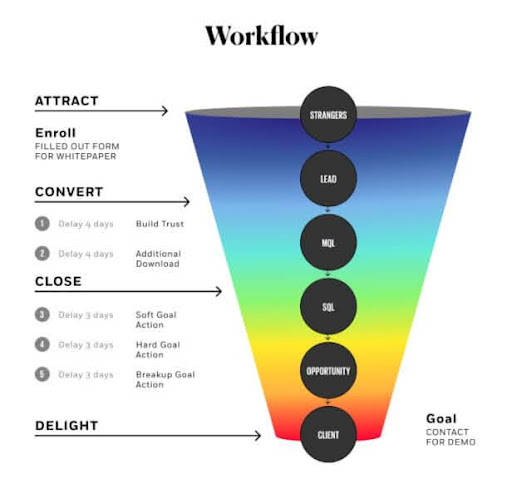A Step-By-Step Guide to Structuring a Digital Marketing Plan

Not having a digital marketing plan is akin to building your house from the roof down in the world of marketing. A good strategy, implemented from the start, serves as the foundation for all aspects of your efforts, from content strategy and marketing automation through to social media and SEO.
It is imperative to get your digital marketing right as it has a real impact on your business. Did you know, for instance, that companies with a blog generate 67% more leads than those without a blog, for example?
To stand out among the 5,000 ads that the average person, your target audience, sees every day, you must execute every aspect of your online marketing strategy plan effectively.
Digital communication channels have become increasingly important for the success of your business. According to Data Reportal, in October 2024, 67.5% of the world’s population were using the internet, the equivalent of 5.52 billion people. And the trend, according to HubSpot’s State of Consumers Trends 2024 report, is for mobile: 65% of digital sales are made on mobile devices. Not tapping into this market and not having mobile responsive content is simply not an option.
So how do you go about creating a marketing plan for digital marketing? With defining the Buyer Persona, SMART goals, a digital content marketing strategy, a value proposition and more, there’s a lot to think about.
What is a digital marketing plan?
But first things first – what is a digital marketing plan? Simply put, it is a document that defines the campaigns you want to run and crucial information about them, namely:
- Short, medium, and long term business (SMART) goals.
- The strategies you will implement to achieve these goals.
- The channels you will use.
- Action and development plans.
- Investment and budget.
- Timeframe and roadmap.
According to Philip Kotler, considered one of the fathers of modern marketing, a traditional marketing plan serves: “to document how the organization’s strategic objectives will be achieved through specific marketing strategies and tactics, with the customer as the starting point. It is also linked to the plans of other departments within the organization.” You will want to keep this statement front of mind to stay focused.
With this in mind, does your company need a digital marketing strategy? In the majority of cases, the answer is a resounding yes. An online marketing strategy enables you to:
- Attract, convince, convert, and make your customers fall in love with your product or service.
- Plan strategies and actions to reach your target customer.
- Segment your marketing campaigns to provide value in every stage.
Before starting to work on your digital marketing plan, you first need to lay down the groundwork by understanding your company’s online presence, your target audience, the channels where you want to be present, your competitors and what they do.
We will now describe the step-by-step process for structuring your digital marketing plan.
How to create a Digital Marketing Plan in 2024

Step 1: SWOT Analysis
The first step in planning your online marketing strategy is to carry out an internal and external analysis (SWOT analysis) of the company. This useful framework helps you identify the strengths, weaknesses, opportunities, and threats for your company and the market.
You need to be familiar with the ecosystem in which you are operating: what your customer's needs are and where they are addressed. This analysis is both qualitative and quantitative as it looks at factors such as digital habits, intermediaries, influencers, and more.
Implementing benchmarking techniques is another common practice. This enables you to identify best practices, success stories and find examples for your digital marketing plan.
You also need to conduct an internal examination to understand your company’s current digital situation:
- Is your website customer-oriented?
- How is usability and the browsing experience?
- Do you update your blog periodically?
- What is your website’s current positioning?
- What is your social media presence?

Step 2: Establish Digital Marketing (SMART) Goals
Once you have an understanding of your strengths and place in the market, it’s time to start setting goals. Your goals are your destination and will drive every action you take.
During this phase, it is important to use the SMART goals framework: make your goals Specific, Measurable, Attainable, Relevant, and Timely to be successful.
Here’s an example of SMART vs. non-SMART goals:
- Non-SMART goal: “I want to increase the number of visits to my website.”
- SMART goal: “I want to reach 20,000 visits a month on my website every month within three months. To do so, I’m going to do X, Y, and Z.”
Step 3: Define Your Digital Marketing Strategy
Once you’ve set your business goals, it’s time to think about how you are going to meet them. Personalization is increasingly important in digital marketing so you are advised to keep these factors in mind when defining your online marketing strategy:
- Segmenting your target audience: Know who you want to address, their tastes, needs, or preferences, how to meet their expectations, etc. Create a detailed profile for your Buyer Persona.
- Positioning: To position well, it's crucial that you are very clear (and reach your audience in the same way) about what your value proposition is and what it entails. You also need to know how to communicate this proposition clearly on digital channels. Why should the consumer choose you and not the competition? Determine the channels where your audience is most present (social media, blogs, email, etc.). In addition to social media, use the “About Us” page to communicate your proposition.
- Content strategy: Your content plan is crucial for creating, distributing, and managing original content that attracts users and positions the brand as a leader in the user’s mind. Make sure you map out a specific content strategy (content marketing) for each channel. The content strategy must be intrinsically connected to the Buyer Persona and speak to them: what kind of content do they consume and in what format, which groups do they follow, etc. The more information you have, the closer you will be to producing the content that speaks to them.
You will want to think about using the following tools when creating your content strategy:
- Keyword research: This involves identifying appropriate keywords to include in the content such as to organically improve SEO positioning. This is imperative for every content strategy if you want users to find you on search engines.
- Content calendar: A content calendar is key for ensuring your strategy makes sense. It provides value and it lets you think long-term and optimize your resources, help come up with ideas, and more. When creating a content calendar, make sure to include the publication date, author, post topic, keywords, tags, links and more.
- Social posting: Writing an article and not promoting it on social media is a mistake. Posting on social media isn’t spamming. Plan out what you are going to publish and when on every social media platform with the copies best suited for each one, the ideal number of characters, links, hashtags, and more. It’s important to include the team in the diffusion of content, and we can recommend asking employees to share articles, interesting links, etc. on professional channels like LinkedIn. The company page can even send a notification to employees when new content is published.
Step 4: Digital Strategies and Tactics
Depending on what your goals are (attraction, conversion, loyalty, etc.), you can now start to execute your strategies, whether they be email marketing campaigns, social media, CRM, web optimization, SEO strategies, paid media advertising, etc.
There are numerous formats you can use for acquisition, including webinars, ebook downloads, infographics, and detailed reports. You can also drive engagement through discounts, promotions, and special offers.
With the growing number of channels to manage and the increasing volume of customer data, it's essential to leverage Marketing Automation tools to streamline and automate your marketing campaigns.
These tactics enable you to design automated workflows that can launch hundreds of campaigns with just a few clicks. You’ll be able to personalize messages based on your Buyer Personas, boosting your success rates. Plus, you can convert leads into customers by tailoring your approach based on their interactions with your brand.

Technology has become a key enabler of digital strategies, making it essential to master how to leverage it to its full potential.
Step 5: Measuring Results & KPIs
Your work doesn’t end once your digital marketing strategy is designed and launched. The next crucial step is analyzing the results. Analytics play a vital role in optimizing both performance and budget efficiency.
You need to measure every action using KPIs to determine if you’ve achieved the expected ROI. By evaluating the effectiveness of your digital marketing strategy and activities, you can identify what’s not working and make adjustments to meet your goals.
Having tools that allow us to carry out this analysis is crucial. Salesforce, for example, enables you to measure all ongoing actions and see how the user reacts and behaves at each step of the journey.
In addition to extracting valuable insights, you can also leverage the AI that Salesforce provides to enhance the user experience and deliver the right content to each lead at the optimal time.
It is important that you have an effective, real-time data visualization system in place. The digital landscape evolves quickly, so you must stay alert to spot opportunities and areas for improvement at a moment's notice. Data is invaluable: without it, you're operating in the dark and making decisions without a clear foundation.
We emphasize the importance of using tools that collect, process, and extract value from data. Mulesoft, an integration software, connects systems to maximize data exchange and utilization. When paired with the Salesforce ecosystem, it can be extremely beneficial for you.
Keep these steps in mind when crafting your digital marketing plan and avoid leaving anything to chance. In the digital space, uncertainty is your biggest enemy if you want to establish a strong presence and stand out.
Similarly, remember that technology can become your strongest ally in creating personalized, automated, and ultimately successful marketing campaigns. As tasks become more complex, the right tools can help streamline your work and enhance your performance.
Crafting a Winning Digital Marketing Plan: Expert Services to Drive Your Business Forward
Developing a strong digital marketing plan is crucial for any business aiming to succeed in today's competitive market. At We Are Marketing, we understand the complexities involved and are here to support you at every stage. Our all-encompassing services include SEO, analytics, rankings, strategies, social media, and performance metrics. Focused on innovation, our team delivers customized solutions that address both current challenges and future opportunities. Partner with us, a trusted digital marketing agency, to unlock your marketing strategy’s full potential and drive your business forward in the fast-evolving digital world.
Subscribe to our newsletter and stay up to date with the latest digital trends.
Subscribe to our newsletter and stay up to date with the latest digital trends.
No thanks. My inbox is fine as it is.